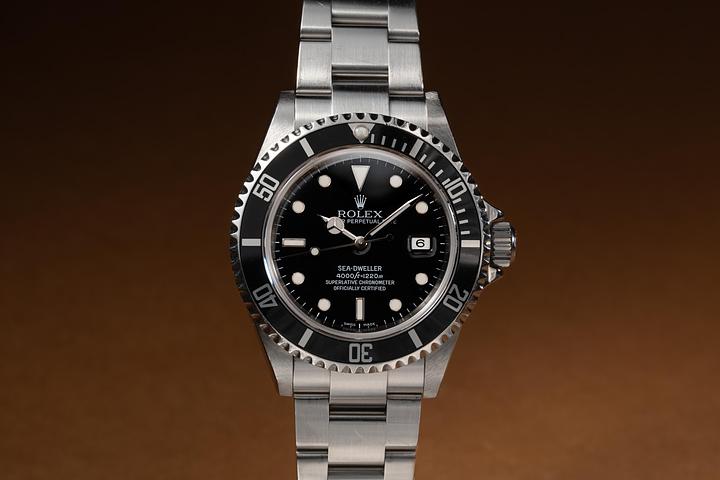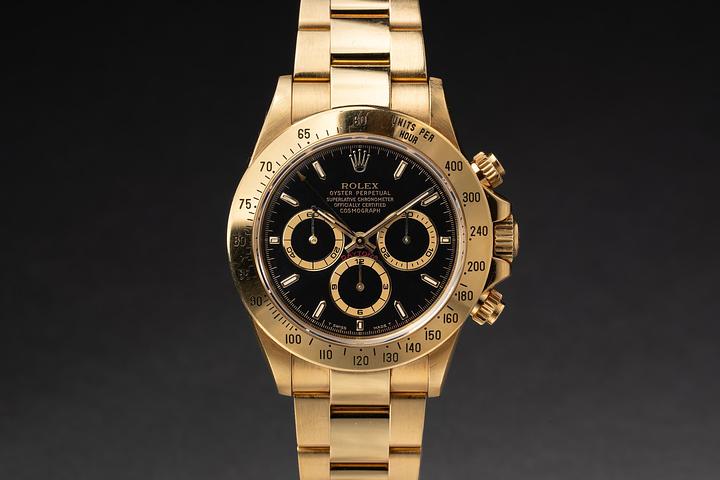Rolex Daytona 6239: The Chronograph That Changed the Game
.jpeg)
The Rolex Daytona 6239: A Swiss Watchmaking Legend That Defined Speed and Style
It started with speed. And not the kind that makes headlines on racetracks alone — but the speed of evolution, of a market quickly warming to chronographs with a purpose. The Rolex Daytona 6239 is one of those rare timepieces that didn’t just keep time. It changed how we see precision, how we connect style with heritage, and — honestly — how Swiss craftsmanship told a story through a steel case and a pair of subdials. As the inaugural reference in the iconic Daytona lineage, the 6239 isn’t merely a watch. It's a chapter. Scratch that — a cornerstone in horological history. If you're here to learn what makes this watch such a mythic figure in the world of Swiss luxury, well... clear your schedule for the next few minutes.
The Origin of the Rolex Daytona: Speed Meets Swiss Precision
Heading into the 1960s, Rolex was already seated at the high table of Swiss watchmaking. Their Oyster Perpetual line had proven they could match innovation with timeless design. But the chronograph? That was more of a specialized tool watch category, one Rolex hadn’t fully cracked yet — not like Breitling or Heuer had. Enter the Cosmograph reference 6239 in 1963, designed with professional racing drivers squarely in mind. The watch took clear cues from the growing motorsport culture in America. Its name — “Cosmograph Daytona” — was inspired by the infamous Daytona International Speedway in Florida, where Rolex had recently become the official timekeeper. The alliance was sealed, and a legend was in motion.
Design Language: Bold, Functional, Unapologetically Sporty
What made the 6239 instantly noticeable? Well, first, let’s talk bezels. Earlier Rolex chronographs had a tachymeter scale printed on the dial; the 6239 moved that scale to its wide metal bezel, improving legibility for drivers tracking speed. This small shift changed everything. Bold, high-contrast styling also helped — think silver dials with black subdials or reverse panda variations, depending on the model. Rolex’s decision to invert the subdial colors wasn’t just aesthetic. It was practical. Easier to read under pressure. Kind of like a great racecar dashboard in the heat of a turn. And that’s before we even talk about the pump pushers. Simple. Unthreaded. Ready to click without a second thought. The 6239 wasn’t fussy. It was fast — in form and function.
The Movement: Valjoux 72 at the Heart
Here’s a surprise to those who assume Rolex always used in-house movements (spoiler: they didn’t always). The 6239 was powered by the Valjoux 72, a manually wound column-wheel chronograph caliber. Not a Rolex creation, but a finely tuned Swiss engine nonetheless. Rolex modified it slightly and rebranded it as the caliber 722, then later 722-1. It was reliable, robust, and — most importantly — accurate. The manual wind might seem like an odd choice today, considering the modern preference for automatics, but back then? For a motorsport chief timing device? Manual was king. It gave the wearer control. It meant something. You had to engage with it daily. There’s something poetic in that, honestly.
“The Paul Newman Daytona”: Pop Culture Immortality
Now, let’s get this out of the way—yes, we all love a good Paul Newman anecdote. But here’s the truth: he didn’t make this watch famous by accident. He wore it. Every day. Often. And people noticed. But the specific version with the Art Deco-style font on the subdials — now famous — wasn’t even called “Paul Newman” by Rolex. That nickname came from collectors decades later. The dial variant saw limited production, making it exceedingly rare, especially with perfect patina and original condition. But let's be clear: whether you chase the “Newman” or not, the 6239’s credibility stands without celebrity endorsement. The fame just...supercharged its cult appeal.
Collectibility and Value: From Affordable to Auction Buster
For years — really until the late 1980s — vintage Daytonas, including the 6239, were sleeper watches. Often overlooked in favor of Submariners or GMT Masters. Then came the collector craze. And suddenly everyone wanted a piece of the early Daytona era. Prices surged. Demand skyrocketed. Today, a well-preserved 6239 can easily fetch six figures at auction. Paul Newman’s personal 6239, the one literally off his wrist, sold for a mind-blowing $17.8 million in 2017 at a Phillips auction in New York. That’s not just top-of-market respect — that’s historical relevance with an exclamation mark. And it’s not just the “Newman” variants seeing love. Even standard-dial 6239s are cherished for their vintage authenticity, humble beginnings, and undeniable charisma.
Legacy: Why the 6239 Still Matters in Modern Swiss Watchmaking
In today’s world of luxury timepieces — ceramic bezels, automatic chronographs powered by vertical clutches, and eye-watering price tags — the Rolex 6239 reminds us of the roots. Of a time when tool watches were just that: tools. Made for a purpose. Meant to perform. Yet that simplicity, that clarity of design, has given the 6239 a kind of immortality that most modern references can only dream of. It’s more than a pretty relic. It’s a living document of what Rolex believed in: precision, utility, and understated cool. The 6239 laid the groundwork for the Daytona's evolution into the cultured icon it is today. And for lovers of Swiss horology, it remains one of the greatest to ever tick time forward. Not too loud, not too flashy — just unapologetically important.




